X
Map key
 China
China Philippines
Philippines Taiwan
Taiwan Vietnam
Vietnam Brunei
Brunei Malaysia
Malaysia
Disputed Waters
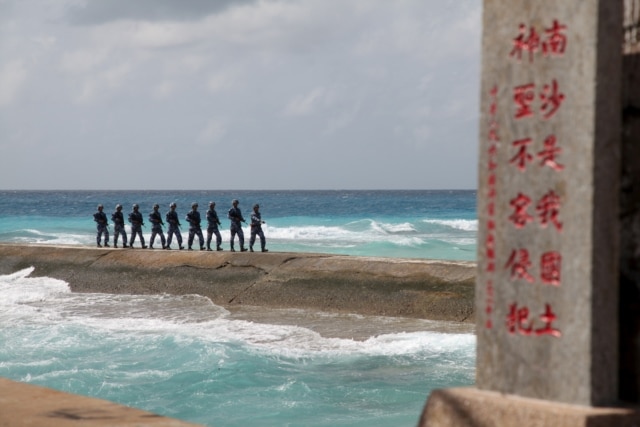
Soldiers of China’s People’s Liberation Army (PLA) Navy patrol near a sign in the Spratly Islands, known in China as the Nansha Islands, February 9, 2016. The sign reads “Nansha is our national land, sacred and inviolable.” REUTERS
China (People’s Republic of China)
China claims sovereignty over all South China Sea islands and jurisdiction over adjacent waters. China maintains that the following island groups have belonged to China since ancient times: Spratlys (Nansha), Paracel (Xisha), Pratas (Dongsha), Macclesfield Bank (Zhongsha).
China controls
The Paracel Islands: Woody Island, Lincoln Island, Duncan Islands, Money Island, Pattle Island, Triton Island
The Spratlys: Fiery Cross Reef, Subi Reef, Mischief Reef, Johnson South Reef, Gaven Reef, Hughes Reef, Guarteron Reef
The Scarborough Shoal: A circular formation of reefs that lie some 230 kilometers from the Philippines and 1,000 kilometers from China’s Hainan island
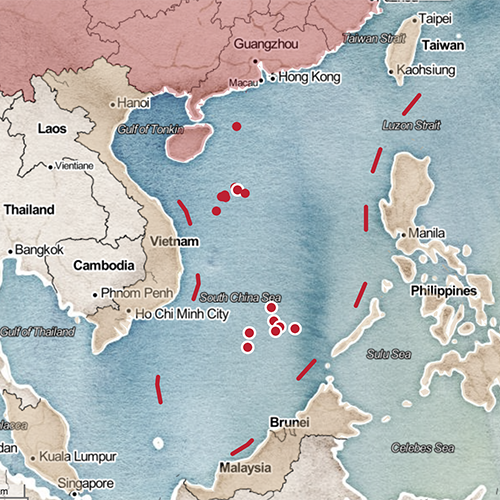
Principal economic interests
Fishing: According to the U.S.-based Center for Naval Analyses, China has the largest fishing industry in the world, catching an estimated 13.9 million tons of fish in 2012, which constituted 17.4 percent of the world total.
Fossil fuels: H-981 Oil Rig in the Paracel Islands; the China National Offshore Oil Corporation (CNOOC), the only Chinese company with deep sea drilling technology, opened up energy reserves near the Paracels in June 2012 to international bids in a move to dissuade Vietnam’s foreign lessee’s from developing the oil and gas resources in those blocks. CNOOC also deployed the deep water drilling platform HYSY 981 near the Paracel Islands in May 2014, leading to severe protests from Vietnam. The rig was removed in July, a month before scheduled completion of drilling activities. CNOOC later claimed that it had all the data it needed and would study it in Hainan.
Shipping lanes, trade: According to the U.S.-based Center for Naval Analyses, top Chinese official are concerned seaborne trade security, and that a 2015 defense white papers gave prominence to PLA sea lane protection.
Tourism: Hainan district government efforts to nurture tourism on the Paracel and Spratly islands and has sparked protests from fellow claimants.
Regional infrastructure
China accelerated land reclamation and infrastructure construction at Spratly Island outposts in 2014. China completed a 3,000 meter airstrip on the Fiery Cross Reef, along with concrete aprons along Subi and Mischief reefs. CSIS satellite imagery of all three reefs show recently constructed fighter-jet hangars designed for J-11, Su-30, H-6 bomber, Y-20 and Il-76 transport planes, and KJ-2000 surveillance aircraft. Nearby facilities contain radar and communication systems, lighthouses and military facilities.
- Fiery Cross Reef
- Mischief Reef
- Subi Reef
- Cuarteron Reef
- Johnson Reef
- Gaven Reef
- Hughes Reef
- Woody Island
- Scarborough Reef
- Second Thomas Shoal
Land Reclamation: Fiery Cross Reef
China has worked to expand its physical presence in the South China Sea by rapidly developing man-made islands. In less than one year, China transformed Fiery Cross Reef into a military-ready installation with an airstrip capable of landing fighter jets and large commercial planes.
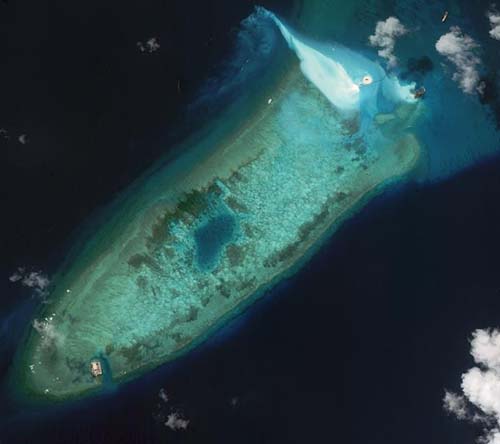
August 2014
These tiny artificial islands are created by dredging sand onto the surrounding coral reefs.

September 2014
The Fiery Cross Reef installation now includes sea-walls, a deep-water port, an airstrip, a track, multiple tennis and basketball courts, a hospital, a farm, radar facilities, and other military buildings.

November 2014
The Fiery Cross Reef airstrip is long enough (3km) to land any plane, from fighter jets to large transport aircraft to commercial planes.
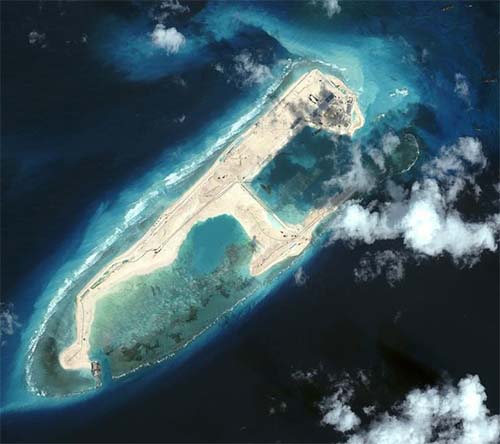
December 2014
In addition to escalating geopolitical tensions, China has been criticized for the environmental impact on fragile reef ecosystems through the destruction of habitat, pollution and interruption of migration routes.

March 2015
China has created more than 3,200 acres of new land.
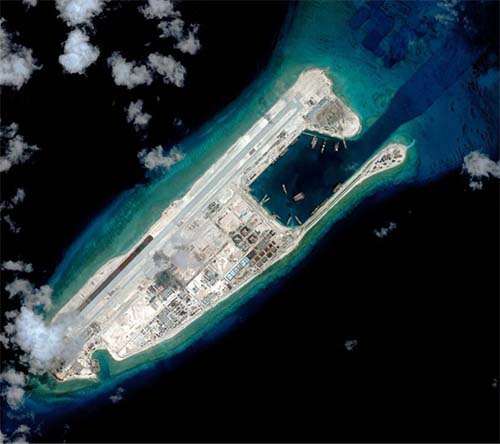
September 2015
For comparison: Vietnam has reclaimed about 120 acres; Malaysia has reclaimed 70 acres; the Philippines has reclaimed 14 acres; and Taiwan has reclaimed eight acres.
Sources: CSIS Asia Maritime Transparency Initiative/DigitalGlobe, U.S. Department of Defense, The New York Times
Timeline of events

